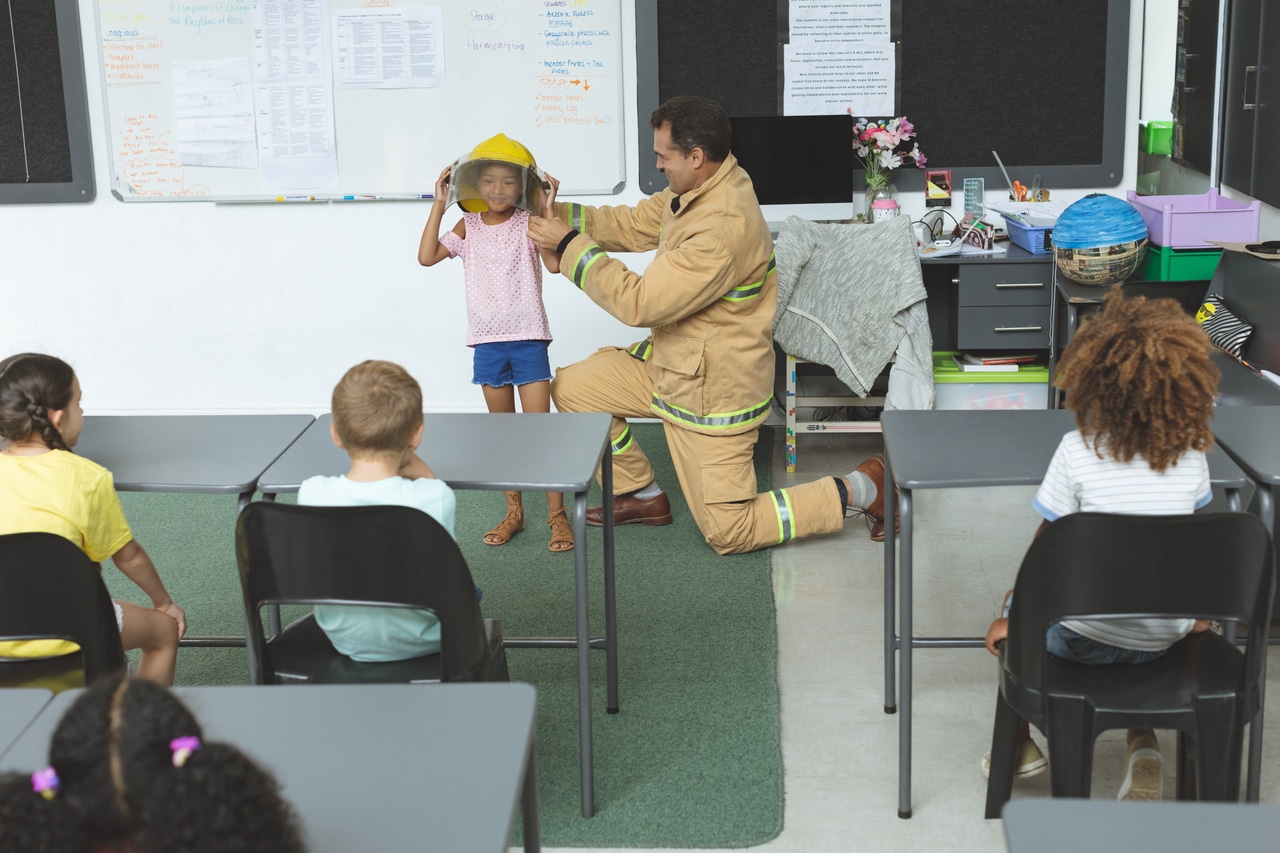Fire safety is among the many life skills that kids should be taught at an early age. Unlike adults who prioritize leaving the house in case of fire, kids respond oppositely. They often try hiding below the bed, behind furniture, or in a cabinet. Some even hide from firefighters in the event of a fire. While kids won’t understand how fire can damage a home, educating them on how they can get to safety is prudent. Below are a few ways of teaching kids about fire safety.
In This Article
1. Communication is Crucial
Effective communication is key in fire safety management. While kids may not aptly understand the dangers of fire due to developing brains, you should use simple language, repeat the message severally, and use examples. You should divulge any fire-related information and vocabulary during your lessons for a better understanding.
The US Fire Administration insists on the importance of sharing basic facts and characteristics of fire with young kids. You should teach children how to differentiate fast, hot, and deadly fires from small fires. Explain to kids the importance of escaping immediately after a fire starts and the dangers of inhaling black smoke from a fire outbreak.
Knowing the characteristics of a dangerous fire helps kids identify early and discourage them from playing. Important vocabulary to include in your lessons include:
- Firefighters
- Fire hydrant
- Firetruck
- Smoke
- Hose
- Alarm/smoke detector
- Dalmatian
It is best to have these words illustrated in cards with their pictures. This can help kids connect the terms with actual realities.
2. Watch Fire Safety Videos
Kids learn better through visuals. Therefore, you should take advantage of the many online videos that teach kids about fire safety. The goal of watching fire safety videos isn’t to scare them. Instead, it should prepare them for such eventualities. As such, you should choose kid-friendly videos they can easily relate to. These include videos with fully-dressed firefighters in action or demo rescue operations.
3. Play Fun Fire Activities
As mentioned, fire safety shouldn’t be a scary learning session for kids. The goal is to help kids avoid and escape from a fire incident. Therefore, you should tailor these lessons to their age to make learning fun. Below are a few educational fun fire activities:
- A field trip to the local fire station – kids are naturally frightened by many things, including firefighters. Some even hide from firefighters and other uniformed persons. Taking them to your local fire station provides an opportunity for physical interactions with uniformed firefighters.
- Read books – reading books with kids is another fun fire activity. Books about fire safety, fire trucks and their purpose, and fire stations can help kids learn about fire safety.
- Find exit signs – you can plan a simple trip within the school, community center, church, or home hunting for fire exit signs.
- Stop, drop, and roll – it is an exciting game that teaches invaluable lessons about escaping from a fire. You can also create the “stay low and go” game. Ensure that you explain the motive of these games to young kids.
- Practice fire drills – fire safety drills are another fun activity that educates kids about fire safety. Use the bell as an alarm that signifies a fire incident and watch your kids evacuate. You can create roadblocks for older kids that act as imaginary fire to prevent kids from leaving through a specific route.
- Finding a meeting spot – just like the exit signs, you can create a mission of finding the meeting spot. Kids should brainstorm how to leave a building on fire into the meeting spot. Sound an alarm and have kids meet at the designated meeting spot.
- Bubble escape – this enjoyable activity helps reinforce the importance of crawling low during a fire incident. Blow bubbles some feet from the flow for them to crawl under.
- Calling for help – you should educate kids on how to call for help from fire departments in case of an emergency. Kids should learn how to call using cell phones or neighbors’ phones.
4. Create a Fire Escape Plan
The main concern about fire safety for kids is they panic in case of a fire incident. Therefore, teaching them about a fire escape plan during fire safety training is important. Giving them plans related to their normal surroundings enables them to make calm and rational decisions during fire incidents.
Remember to use simple language when planning an escape route for kids. With the help of the mentioned activities, you should have designated meeting places outside. You should then create two possible escape routes in every room. This might include exiting through windows and using an escape ladder.
You can make this activity engaging by having kids draw maps of their schools or homes and trace the shortest and safest exit path.
5. Teach Fire Prevention
Fire prevention is a crucial component of overall fire safety. Therefore, while your kids should learn to stay safe during a fire incident, you should also teach them about fire prevention. Below are some fire prevention tips for teaching your kids:
- They should avoid fire hazards, including flammable materials, matches, and lighters
- They should not leave burning candles unattended
- Don’t play around with fireworks
- Avoid playing around fireplace, stoves, or firepits
- Know where fire extinguishers are placed in the house
- Learn possible escape routes at home and school
- Test Smoke Alarms
Teaching kids to differentiate between fire extinguishers and smoke alarms is vital for their safety. Smoke alarms or detectors are important during mass evacuations. Any building with children should have functional smoke alarms, as they identify fire-related hazards. Teach your kids how to check the functionality of smoke alarms and when to exit accordingly.
You should do this practically with real smoke from a matchstick. Place the matchstick under the machine and wait for the sirens when it detects smoke. Though small devices, functional smoke alarms can reduce the risk of dying in a fire incident by 50%. Testing smoke detectors is enjoyable, but you should teach your kids about safe behavior to avoid jokingly triggering these machines.
7. Encourage Family Engagement
Family involvement is a significant contributor to ensuring kids understand fire safety better. Therefore, have the children and family members create fire escape plans for their homes. You should also encourage them to check the functionality of smoke detectors at home.
Conclusion
Most fires start unpredictably and spread rapidly. While adults scamper for safety, kids often go hiding. Therefore, teaching them how to respond to fire incidents can save their lives. You should make fire safety activities, such as fire drills, a routine activity.










![Home Renovation Guide [2025]](/app/uploads/2021/04/design-hacks-1-378x300.jpg)
